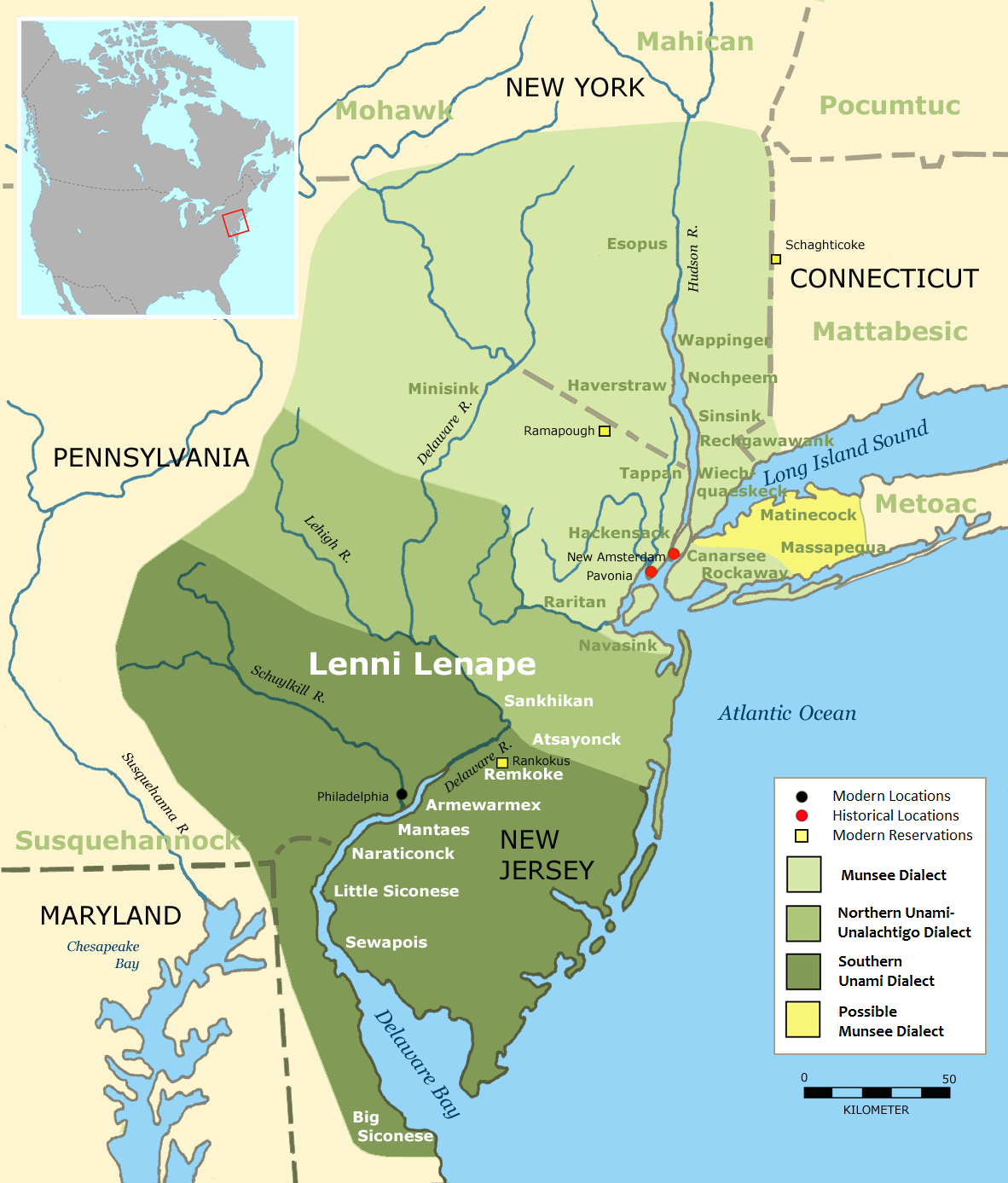 Map of Lenape languages and tribes.
Map of Lenape languages and tribes.
New York City would not exist without the Lenape people. What is today known as Broadway was once a walking trail that stretched from Southern Manhattan to Boston, Massachusetts, created by the Lenape as a trade route. European settlers forcibly removed the Lenape from what we now know as New York beginning more than 400 years ago. Despite a fraught history full of deception and violent displacement, Lenape people continue to reside on their native lands in the greater tri-state area, and in a larger network of communities across North America. Below is a statement from the Nanticoke-Lenape Tribe reproduced with their permission:
“Almost a half a millennia ago, our Lenape and Nanticoke ancestors intermingled and intermarried in order to survive the swift changes brought by the European incursion into our ancient homeland. While many from our tribes were forced west and north, eventually settling in the mid-western United States and Ontario Canada, the families that remained gathered into interrelated tribal communities and continued our tradition as ‘keepers of the land.’
For many years, our people had segregated American Indian churches, social events, and — in Delaware — separate Indian schools. From the mid 1800’s through to the mid 1900’s, it was primarily through several tribal congregations that we were able to preserve our culture and defend our people. Eventually, the tribal leadership moved to establish funded services and programming to benefit tribal citizens and to protect tribal sovereignty for future generations.
Defending and asserting tribal sovereignty is essential to American Indian Tribes. ‘Tribal sovereignty’ refers to the right of American Indian tribes to govern themselves and determine their own future. Attributes of American Indian tribal sovereignty include control of tribal land and the inherent powers to determine their form of government, to define conditions for membership in the nation, to administer justice and enforce laws, to tax and regulate the domestic relations of its members. According to chapter seven of Felix Cohen’s Federal Indian Law, ‘…From the earliest years of the Republic the Indian tribes have been recognized as ‘distinct, independent, political communities’ and, as such, qualified to exercise powers of self-government, not by virtue of any delegation of powers from the Federal Government, but rather by reason of their original tribal sovereignty.’ Within the United States, sovereign powers rest with: the federal government, which is sometimes called the ‘supreme sovereign;’ the state governments, which derive their sovereignty from the federal government; and American Indian tribal governments, the sovereignty of which predates both that of the federal and state governments.”
“Since the first European settlers arrived on our shores in the 16th century, what had been ‘ours’ slowly became ‘ours no more.’ Yet, while many left, our ancestors stayed or returned to watch over the land (and one day reclaim it) and honor our ancient ways.”
– Rev. Dr. John R. Norwood, “We Are Still Here! The Tribal Saga of New Jersey’s Nanticoke and Lenape Indians” (2007)
Sources
- “An Affirmation of History and Sovereignty” by the Nanticoke Lenni-Lenape Tribal Nation.
- “The Dutch & the English, and the Wall That Divided Them” by Michael Lorenzini.
- “Handbook of American Indians North of Mexico, Vol. 1” by Frederick Webb Hodge.
- “History Manners and Customs of the Indian Nations Who Once Inhabited Pennsylvania and the Neighboring States” by John Heckwelder.
- “The Indians of New Jersey, New Jersey History Series No. 3” by Gregory Evans Dowd.
- “Indigenous Peoples Day New York City”.
- “NYC removes Columbus Day from school calendar” by Lauren Cook.
- “Stacking up: Where Do Columbia’s Contributions to the Community Rank among Its Ivy Peers?” by Stephanie Lai.
- “The True Native New Yorkers Can Never Truly Reclaim Their Homeland” by Colleen Connolly.